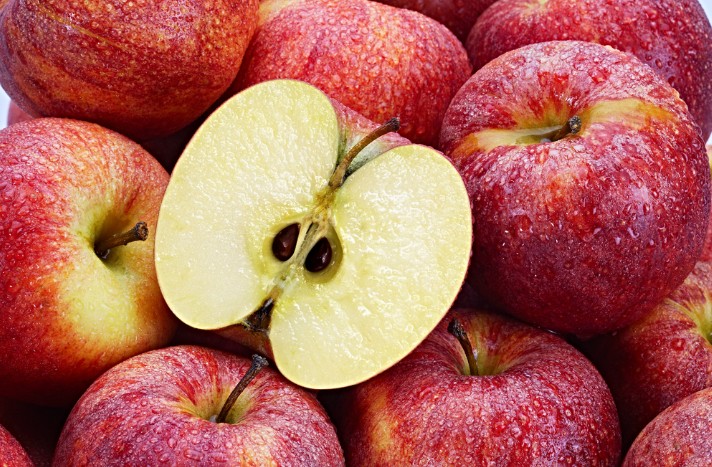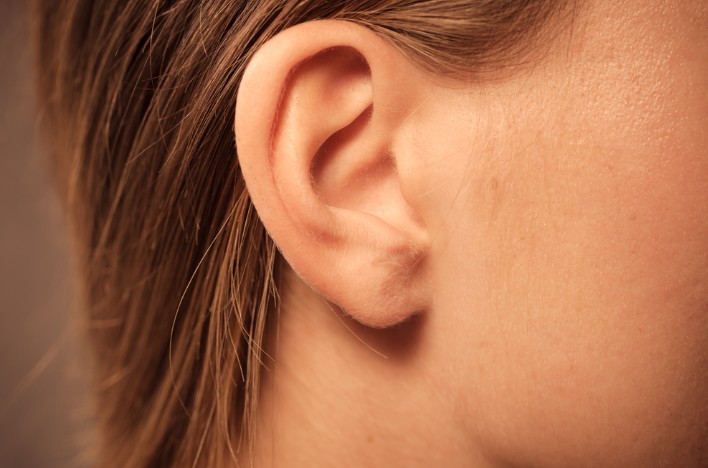"Each Person in Their Faith Shall Live": What's Expected of Me? 5 Points to Consider
Ever looked closely at an apple? Considered the structure of the outer ear? Why isn't a newborn's skin wrinkled, and why does the Torah forbid certain foods?

1. "Under the Apple Tree I Aroused You..."
By simply looking at an apple, one can see features that indicate incredible order and design. From this observation, even the simplest person can recognize and believe in the Creator of the world.
Have you ever wondered about the plastic-like coating that covers the seeds inside an apple? What is this material that's not edible? Why do we even need it? Indeed, the seeds are placed inside the apple within "walls" made of a rigid, plastic-like substance. This material protects the seed from the acidity in the fruit juice and also prevents it from being eaten along with the fruit, as it is hard and difficult to chew.
In other words, it's a special protection to preserve the seed within the apple to ensure the growth of future generations.
Have you thought about how an apple doesn't absorb rainwater while still on the tree and doesn't rot? It turns out that the apple's skin contains oil that makes it water-resistant, protecting the fruit from heavy rains during the months of growth and ripening.

And where does the special scent of apples come from? The oil in the peel gives the fruit its characteristic fragrance - the "apple scent" - which makes the fruit desirable.
What's the meaning of the color of the fruit's peel? Its color indicates the ripeness of the fruit: a green peel shows the fruit is not yet ready to eat; when the fruit ripens, its peel turns red, signaling that it is ripe and ready for consumption. The peel color also plays an important role in making the fruit visually appealing to stimulate the eater's appetite.
Have you considered the role of the "stem" emerging from the apple other than its connection to the branch? The stem acts as a conduit, delivering nutrients to the fruit. Through it, the materials gathered by the roots from the ground are transported to the fruit's stem.
Notice the marvel: even if people ever learn to extract from the ground the nutrients that feed the fruit, it is clear that the machinery needed for this would be extremely complex and heavy, unlike the small fruit stem...
Furthermore, the stem functions remarkably. It holds the fruit tightly until it is ripe. When the fruit is ripe and no longer needs the tree, its grip loosens to allow the fruit to be picked easily, as if there were a synchronized release mechanism -
Could it be that this miraculous process, indicating a guiding and caring hand, came about by itself without a creator and planner?
2. The Ear
If the ear's role is to hear sounds and differentiate between tones, why do we need two ears? Why isn't a simple hole sufficient for sound waves to enter the ear canal? What is the purpose of the oddly shaped lump called the auricle next to each ear's hole?
Suppose there's a soldier on night guard duty. The entire area is dark and deserted, and complete silence prevails. Suddenly, a rustle is heard on the right, and the soldier immediately turns towards the source of the noise. How did the soldier know the rustling came from the right?
The right ear heard the sound a fraction of a second before the left ear, and with greater intensity, passing the information to the brain.
The brain, which received initial information about suspicious rustling from the "receiver" located on the right, immediately instructs the visual systems to turn in that direction and all other body systems to enter high alert. In other words, the ear acts as a receiver!
Note: if the rustling comes from the left, the left ear hears it before the right, with greater intensity. If the rustling comes from the front, both ears hear it simultaneously and with equal intensity.

What happens when the rustling comes from behind? How do we recognize it?
It turns out that the auricle of the ear is designed this way: the auricle is open on the frontal side and rises like a wall from the rear side, creating an auditory "shadow" on the sound coming from behind, and the brain identifies the exact location from this "shadow." Sound waves reaching after passing the auricle arrive in a different tone, indicating to the brain that they came from behind, while sound waves that entered directly through the ear canal came from in front.
We see the incredible design in the external structure of the auditory system. And we haven't even begun discussing the hearing process itself: how sound waves penetrating the ear canal strike "like a hammer on an anvil," and as the mechanical energy of the vibrations reaches the inner ear, it transforms this energy into electrochemical nerve activity in a language the brain understands - a truly amazing process.
Could it be that this miraculous process, indicating a guiding and caring hand, came about by itself without a creator and planner?! By observing the human body, one can understand it's the work of a creator whose genius and powers are infinite.
3. Wrinkled Skin
Who among us hasn't experienced the strange phenomenon of skin wrinkling, especially at the fingertips, after prolonged water exposure, swimming in the pool, or even after a long shower?
I wondered: a fetus spends nine months in warm water (amniotic fluid), protected from disturbances and aiding in proper development. How then does a newborn's skin remain smooth and unwrinkled upon leaving the womb?
What keeps the fetus's skin in the womb so smooth and well-cared for? Isn't this contrary to nature's laws?
It involves a fatty layer called vernix, a white, greasy substance that covers the fetus's skin and protects it while in the womb: the vernix helps maintain the fetus's body heat, keeps the skin moist in an aquatic environment, and prevents infections and inflammations..

When the baby leaves the watery womb and enters the world, it is covered in the white, greasy layer that protects it from bacteria and pollutants, maintains body heat, moistens the skin, and provides anti-allergy properties. Additionally, this layer acts as a lubricant, reducing skin friction and aiding a smooth and quick passage through the birth canal..
This is the finest material, a rare and unique nourishing cream with no second chance to obtain it. Leading cosmetic companies try to mimic the vernix composition to create a quality moisturizing cream for the skin, but without success!
Who created this fatty layer that no cosmetic company can replicate?
4. Kosher Food
Would you fuel your car with diluted gasoline? Of course not! Because we vigilantly protect our car.
- If so, why are we less meticulous about what enters our bodies?
I'll explain: the Torah forbids us from eating certain animals. Ever asked yourself why? Does it really matter if I eat pork or "seafood"? Well, there's a reason for everything, one just needs to observe.
For example, the Torah forbids us from eating pork. Why? Did you know that pigs consume the filthiest waste? If their offspring die and rot - they eat them too. Pigs are not squeamish about anything, even eating meat with diseases and lesions! Moreover, their digestion is among the fastest: within 4 hours, what they eat becomes part of their body. If they consume dirt and filth, it's on a human's plate within 4 hours. It's low-quality, unclean meat.
Another example: "seafood" - a sanitized name for all the insects and cockroaches present at the bottom of the sea. You know what their food is? It consists of the excretions of fish above them... Shortly after they're caught, they end up on a human's plate!
The Torah prohibits us from eating foods that can harm our health and corrupt our soul. Conversely, it permits us to eat animals that are neither predators nor repulsive, all herbivores, and all ruminants. Thus, their meat is of the highest quality and cleanest, and above all - it doesn't corrupt our souls. Of course, there are deeper reasons as well, and of course, even without knowing the reason, we are obligated to fulfill Hashem's command, but in this case - one reason for the prohibition is evident to all.
5. Each Person in Their Faith Shall Live
Many people wave the phrase: "Each person in their faith shall live" as proof that the Torah permits everyone to live according to their ways and beliefs, without the obligation to follow a specific path or observe commandments.
This phrase is commonly used by the public and even considered a wise saying, but the truth is that it distorts the verse "But the righteous shall live by his faith" (Chavakuk 2:4). The verse means the righteous shall live because of their faith, i.e., faith sustains them. This verse doesn't address everyone's appropriate way but rather defines a righteous person.
Thus, people are willing to leave the Torah and commandments for worldly pleasures, believing the Torah grants them permission through the expression 'each person in their faith shall live.' While everyone is given the choice to choose what they want, if our choices aren't good, let's not delude ourselves into thinking the Torah grants us permission for wrongful acts.
When these people realize this expression distorts the verse and contradicts the Torah, will they change their behavior and follow the Torah? I assume not... - Why then did they choose to rely and depend on the twisted quote? Is it due to the convenience it offers, or perhaps because of their resistance to being told what to do?

